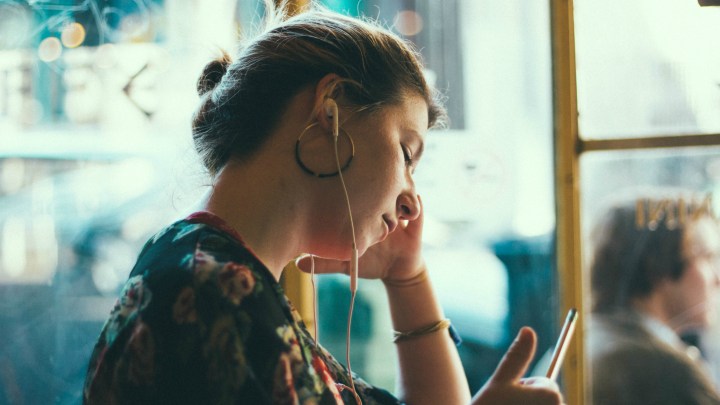
Headphones have become survival tool for open offices
Open offices have been all the rage the last decade or so: those wall-less, doorless, airy hives of activity with workers seated cheek to jowl along a big communal table. They’ve become a favorite punching bag for frustrated workers who’ve blamed them for everything from spreading the flu to cranking up anxiety. A new global survey from the HR research firm, Future Workplace, found employees were evenly split in their preference for an open floor plan, with the difference seeming to come down to how well somebody can deal with noise and distraction.
Office design trends come and go, reflecting shifting tastes and the values of their time, from the cushy closed door executive suites of the postwar Mad Men era to the soulless monotony of cubicle farms.
The current obsession with open offices is in many ways a reaction to those environments said Karen Dillon, author of the Harvard Business Review Guide to Office Politics.
“There’s almost like a management backlash that’s now playing itself out. We’ve allowed people too much independence, or they don’t collaborate enough, or we need innovation,” she said.
The open office, where employees are forced to congregate in a democratized communal space, has been billed as a way to enhance collaboration, to build relationships through spontaneous interactions that inspire trust and creativity.
Their stylish design has also won companies over, according to Roland Dreier, a software engineer at a data storage company in Silicon Valley, where the craze for the open office was born.
“For sure the open office looks great in pictures. You put up some cool looking posters and maybe paint the walls a color that really pops,” he said. “It kind of gives a feeling like your company is really hip and cool.”
Back when his company was a scrappy startup with a couple dozen employees, open office plans allowed the growing business to save on overheads, stay nimble and reinforced the feeling they were doing things differently.
“Sitting around in a small space with close colleagues and talking all the time I think was really effective,” he said. But since those early days the company has added thousands of employees, expanded from one room into multiple buildings, and Dreier said the open floor plan doesn’t quite work the same. “You just kind of end up with a jumble of people distracting each other.”
A growing body of research confirms that having a bunch of people in one place with no walls leads to a lot of noise and distraction: everything from overhearing personal phone calls to loud chewers, chatty Cathys and nail clippers, which wreak havoc on sustained concentration and productivity.
“It’s kind of like being in a zoo sometimes,” said Christopher Oliver, who works in sales for an electrical equipment manufacturer in Murfreesboro, Tennessee where he doesn’t even have an assigned seat. He keeps his belongings in a locker and floats from desk to desk, booking different workstations through an app. He said his attention has likewise begun to wander.
“It’s just like a dog seeing a squirrel. You know, you just listen to everything and look at everything,” he said.
When Oliver needs to focus, he turns to what has become the go-to survival tool of the open office worker: headphones. Not only for their ability to drown out external sound, but for what they say to your co-workers.
“When people see the headphones on it sends a signal that I’m working or I’m engaged or I’d rather not be interrupted,” said author Karen Dillon.
The need to disconnect from the chaos this way can create barriers though. Research suggests workers in open offices are less likely to speak to each other face-to-face, relying on Slack or email instead.
But the Future Workplace survey found groups who were more likely to use headphones to create personal space, like millennials and Gen Z, did have a more positive impression of open offices.
Roland Dreier said he turns up the classical music and podcasts on his headset, while Oliver prefers a more high energy soundtrack.
“I listen to metal,” he said. “Double pedal drums and screaming metal. That kind of just puts me in my happy zone.”
There’s a lot happening in the world. Through it all, Marketplace is here for you.
You rely on Marketplace to break down the world’s events and tell you how it affects you in a fact-based, approachable way. We rely on your financial support to keep making that possible.
Your donation today powers the independent journalism that you rely on. For just $5/month, you can help sustain Marketplace so we can keep reporting on the things that matter to you.












